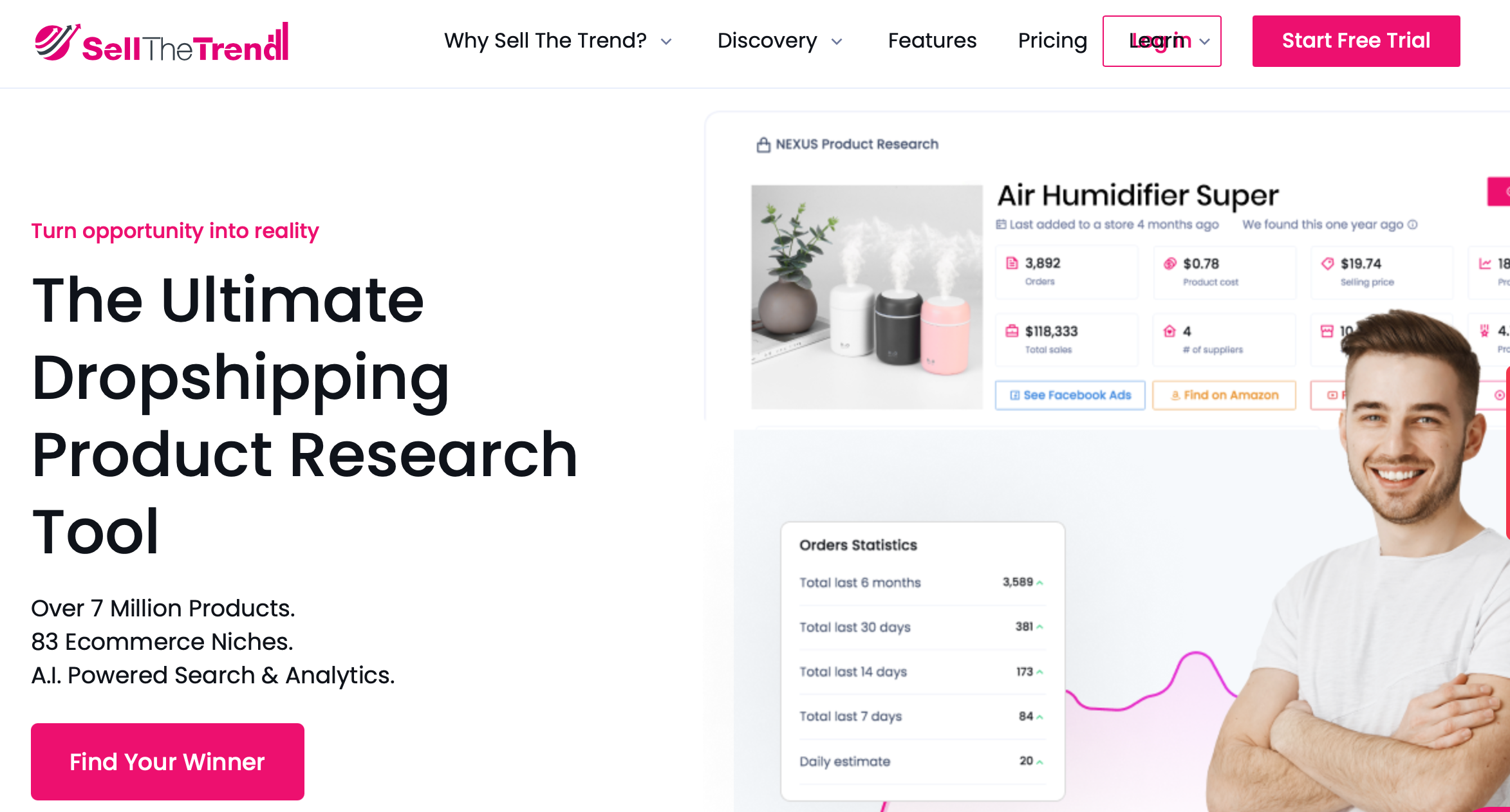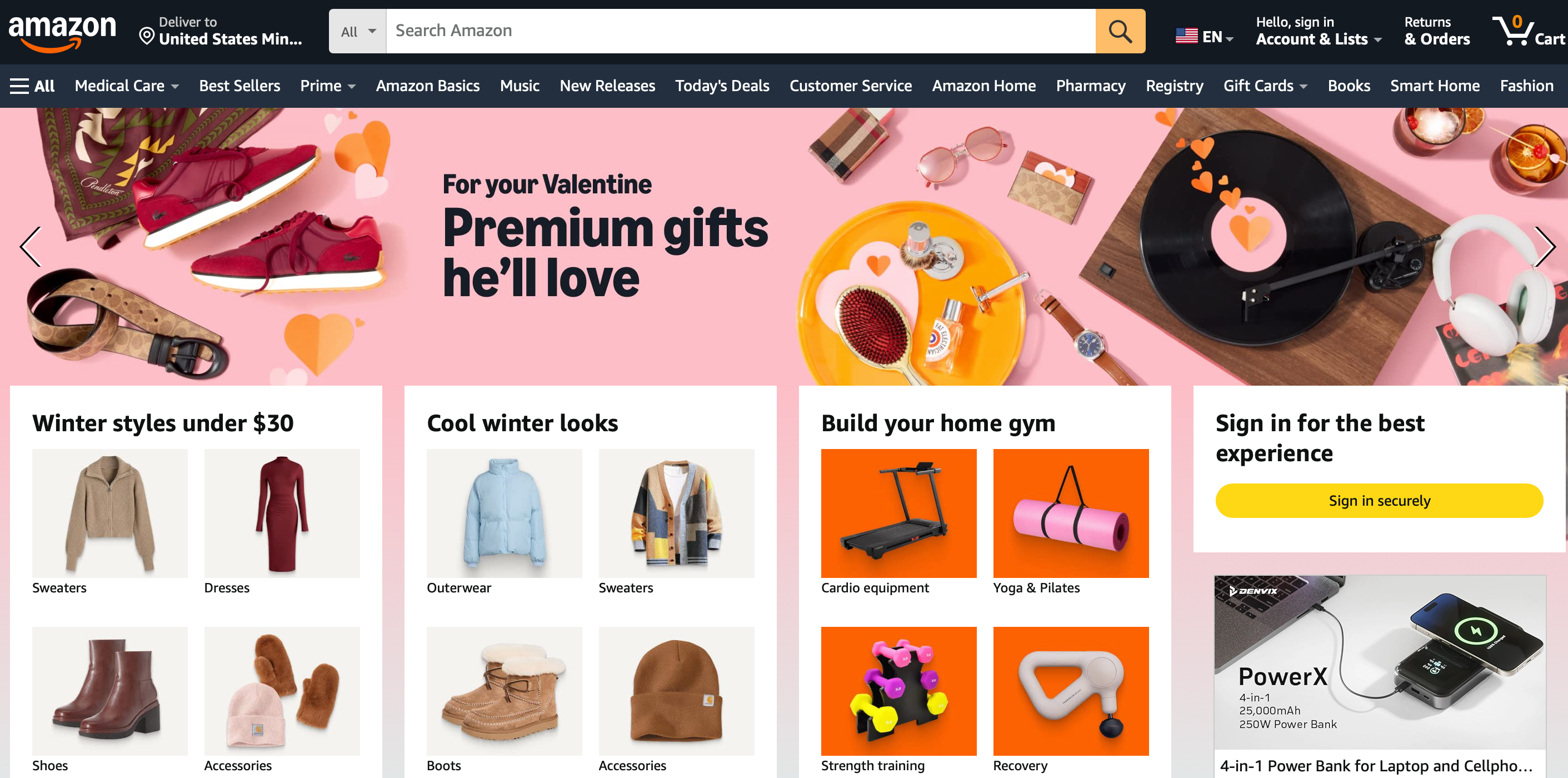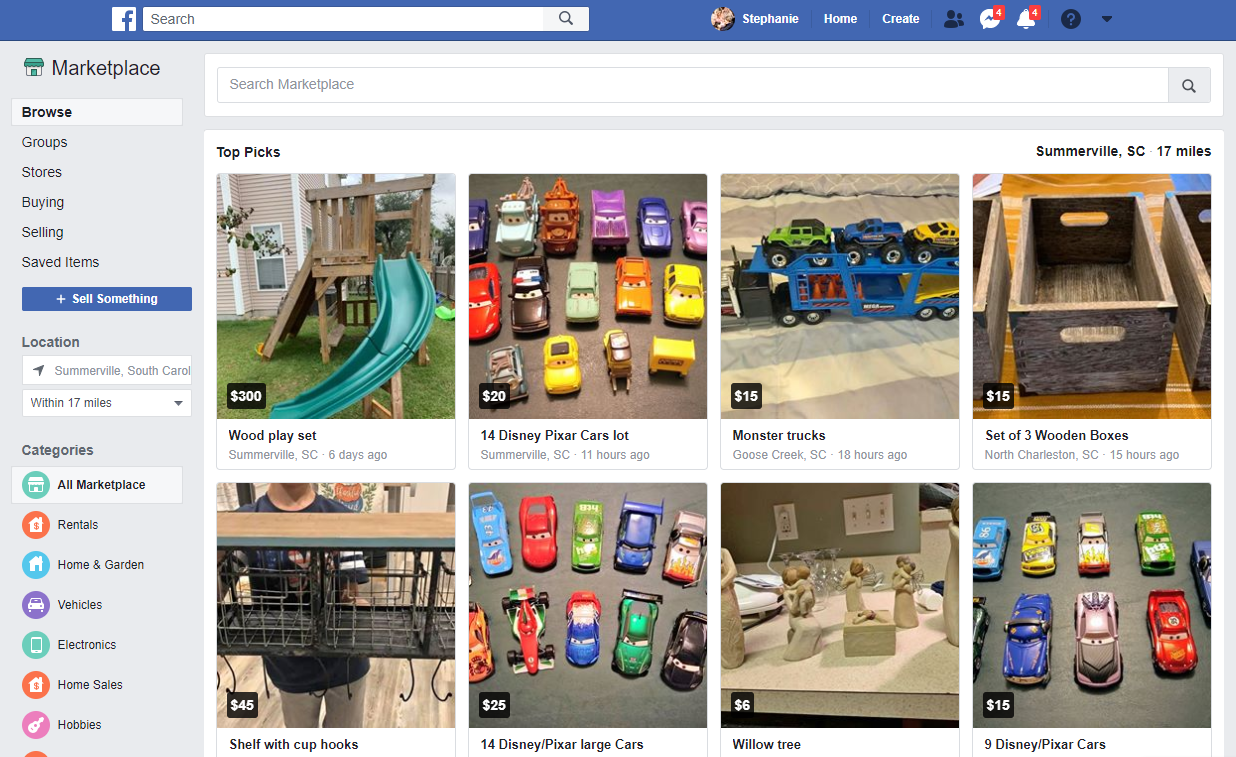How To Start Walmart Dropshipping In 2025: A Step-By-Step Guide
Contents

Walmart dropshipping will be bigger than ever in 2025. More sellers are jumping in, but most don’t know what they’re doing. That’s where you can win.
We’ve been through it all—listing mistakes, supplier struggles, and even account shutdowns. We’ve also seen the wins: fast sales, high margins, and a business that runs without holding inventory. Now, we’re sharing what works.
This guide breaks it down step by step. No fluff, no outdated tips—just a clear path to starting and scaling your Walmart dropshipping business.
Key Takeaways
- Choose the right platform—eBay is beginner-friendly, Shopify offers full control, and Walmart Marketplace has high trust but strict approval.
- Use Sell The Trend to find profitable, low-competition products before they go viral.
- Automate pricing and inventory tracking to avoid stock issues and order cancellations.
- Market your store with organic traffic, paid ads, and influencer partnerships to scale sales.
- Stay consistent—dropshipping success comes from testing, adapting, and improving over time.
What Is Walmart Dropshipping & How Does It Work?
Walmart dropshipping is selling products on Walmart without keeping inventory. Instead of storing items, you list products from suppliers, and when someone buys, the supplier ships directly to the customer. You make money by selling at a higher price than what you pay the supplier.
There are three main ways to dropship on Walmart:
1. Become a 3P Walmart Seller
This is the most common way. You apply to sell on Walmart Marketplace, list products from suppliers, and handle customer service. Walmart lets third-party (3P) sellers operate, but you need a legitimate business, good suppliers, and fast shipping to get approved.
- Pros: Full control over pricing and branding, access to Walmart’s huge customer base.
- Cons: Strict approval process, must follow Walmart’s rules or risk suspension.
2. Become a Walmart Supplier or Drop Ship Vendor (DSV)
This method is for serious sellers who want a direct relationship with Walmart. As a Drop Ship Vendor (DSV), you sell products directly to Walmart, and they list them as “Sold & Shipped by Walmart” instead of by you. Walmart handles pricing and customer service, while you handle shipping.
- Pros: More trust from customers, Walmart covers returns and support.
- Cons: Harder to get accepted, lower profit margins.
3. Resell Walmart Products
This is retail arbitrage—you buy discounted products from Walmart (online or in-store) and resell them on other platforms like Amazon, eBay, or Facebook Marketplace. It’s a low-risk way to start, but Walmart doesn’t officially support it.
- Pros: No need for supplier accounts, easy to start.
- Cons: Walmart can cancel bulk orders, and price changes can cut profits.
Each method has pros and cons. The best one depends on your budget, risk tolerance, and long-term goals.
How To Start Dropshipping From Walmart To Your Store in 2025
Dropshipping from Walmart to your store is simple—you list Walmart products on platforms like eBay, Amazon, or Shopify, then order from Walmart when you make a sale.
The key is finding profitable products, managing price changes, and avoiding order cancellations. Let’s jump into the steps:
1. Find Winning Products To Sell
Finding the right products is the key to success in Walmart dropshipping. You need items that sell fast, have good profit margins, and are easy to ship. Choosing the wrong products can lead to low sales, high returns, or even account issues. That’s why research is crucial.
Here’s how to find the best ones:
1.1 Check Walmart’s Bestsellers
Walmart has a Bestsellers section where you can see what’s trending. Go to Walmart.com → Best Sellers and look for products with high ratings and strong reviews. If people are already buying, that’s a good sign. But don’t just grab any best-selling product—dig deeper.
Pay attention to:
- Products with steady demand – Avoid items that suddenly become popular and fade just as quickly.
- Customer reviews – Products with 4+ stars and at least 100 reviews are usually solid picks.
- Stock availability – If an item frequently goes out of stock, it can disrupt your business.
1.2 Use Product Research Tools
Just because a product is a bestseller doesn’t mean it’s perfect for dropshipping. Make sure to check its price history, competition, and shipping feasibility before listing it in your store.
Sell The Trend: A Smart Tool for Finding Winning Products

Product research tools take the guesswork out of finding winning products. They analyze real sales data, trends, and competition levels so you can make informed decisions.
In my opinion, Sell The Trend’s Product Explorer is one of the best tools for quickly identifying high-demand, low-competition products. It scans thousands of stores and marketplaces, including Walmart, Amazon, Shopify, and AliExpress, to reveal what’s trending before it becomes oversaturated.
With its AI-powered search, you can filter products based on sales trends, pricing history, and engagement levels. This means you’re not just picking random items—you’re choosing products with real market demand.
Some other best tools for Walmart dropshipping include:
- Zik Analytics (great for eBay dropshipping)
- Google Trends (shows whether a product is gaining or losing popularity)
Some products look great but have hidden problems, like frequent price fluctuations or supply chain issues. Use these tools to avoid those pitfalls.
1.3 Avoid Restricted & High-Risk Items
Not every product is safe for dropshipping. Some items can get your account flagged, lead to order cancellations, or have high return rates.
Stay away from:
- Branded products (Nike, Apple, Adidas, etc.) – Selling name-brand products without authorization can lead to copyright claims or account suspension.
- Fragile items (glassware, ceramics, electronics) – These break easily during shipping, leading to high return rates and refunds.
- Oversized or heavy products – Large items cost more to ship and may require freight services, which can eat into your profits.
- Perishables & regulated goods (food, supplements, medical devices) – These often have strict selling regulations and can be canceled by Walmart.
Instead, focus on non-branded, high-demand, lightweight, and easy-to-ship products that don’t have strict selling restrictions.
1.4 Find Seasonal & Evergreen Products
A good strategy is to sell a mix of evergreen and seasonal products to keep sales steady year-round.
Evergreen Products (sell year-round):
- Home organization (storage bins, shelves, kitchen racks)
- Office essentials (desks, chairs, laptop stands)
- Baby products (bibs, bottles, diaper bags)
- Pet supplies (beds, feeders, grooming tools)
Seasonal Products (sold during specific times of the year):
- Winter – Christmas decorations, heaters, winter clothing
- Summer – Pool accessories, BBQ grills, camping gear
- Back-to-school season – Backpacks, notebooks, school supplies
Pro Tip: Start listing seasonal products at least 1-2 months before peak demand to take full advantage of sales spikes.
2. Choose a Selling Platform
Where you sell your Walmart dropshipping products matters just as much as what you sell. Each platform has its own rules, audience, and fees, so picking the right one depends on your goals. Some platforms are easier to start with but have more restrictions, while others offer more control but require more effort.
Here’s a breakdown of the best platforms for Walmart dropshipping:
2.1 eBay – Best for Beginners

If you’re new to dropshipping, eBay is one of the easiest places to start. There’s no approval process, and listing products is simple. Plus, millions of buyers are already searching for deals. Unlike Shopify, where you have to drive your traffic, eBay already has an audience looking for low-cost, fast-shipping products, making it a great entry point for beginners.
One of the biggest advantages of eBay is that you don’t need upfront ads—buyers are already searching for the products you list.
That means you can start selling without spending money on marketing. There’s also no requirement for business registration, which makes eBay more accessible than platforms like Walmart Marketplace or Amazon. The listing process is straightforward, and eBay provides built-in traffic, so your products get exposure as soon as they go live.
What to watch out for?
- Strict dropshipping policies—eBay allows dropshipping, but only from wholesalers and manufacturers, not retailers like Walmart.
- Order cancellations—Walmart frequently cancels large orders, which can lead to eBay suspensions if you can’t fulfill them.
- High fees—eBay takes 12-15% per sale, plus additional fees if you exceed free listings.
2.2 Amazon – High Traffic, High Risk

Amazon has huge potential, but it’s not beginner-friendly for Walmart dropshipping. While millions of buyers search Amazon daily, its strict policies make it a high-risk platform for dropshipping directly from Walmart.
Amazon doesn’t allow orders with Walmart invoices or packaging, meaning if customers receive an item with Walmart branding, you could get flagged. Despite this, some sellers still use Walmart as a supplier while carefully managing their fulfillment process.
One major advantage of Amazon is its massive customer base. Unlike Shopify, where you have to drive traffic through ads, Amazon already has millions of buyers searching for products.
This leads to high conversion rates—customers trust Amazon and are more likely to buy compared to other marketplaces. Additionally, Amazon offers FBA (Fulfillment by Amazon), which allows sellers to store products in Amazon warehouses, and Amazon handles shipping, customer service, and returns.
While FBA isn’t an option for traditional Walmart dropshipping, sellers who want to transition from dropshipping to stocking inventory can take advantage of it.
What to watch out for?
- Policy violations—You can’t use Walmart as a direct supplier due to invoice and packaging issues.
- Account suspensions—Amazon enforces strict seller performance standards.
- Referral fees—Amazon takes 8-15% per sale, plus fulfillment costs.
2.3 Shopify – Full Control, But Needs Marketing

If you want full control over your store, branding, and pricing, Shopify is the best option. Unlike eBay and Amazon, Shopify doesn’t have restrictions on where you source your products, meaning you can freely dropship from Walmart without worrying about policy violations.
However, the trade-off is that you’ll have to generate your traffic—Shopify doesn’t come with a built-in audience like eBay or Amazon.
One of the biggest advantages of Shopify is the freedom to run your business your way. There are no selling restrictions, so you can list any products you want without platform limitations.
You also get full branding control, meaning you can create a custom website, design a unique storefront, and set your prices. Unlike eBay or Amazon, where multiple sellers compete on the same listing, Shopify allows you to stand out without direct price wars.
What to watch out for?
- No built-in traffic—you have to market your store with SEO, social media, or ads.
- Monthly costs—Shopify charges a subscription fee ($39+/month) plus transaction fees.
- Learning curve—setting up a profitable Shopify store takes time and effort.
2.4 Facebook Marketplace – Fast Sales, Manual Work

Facebook Marketplace is an underrated platform for Walmart dropshipping. It has a highly engaged audience, meaning products can sell quickly, especially in categories like home goods, tools, and everyday essentials.
One of its biggest advantages is that there’s no upfront cost to list products—you only pay a small 5% selling fee per order (or a flat $0.40 for orders under $8).
Unlike eBay or Amazon, which have strict selling policies, Facebook Marketplace has no major seller requirements, making it one of the easiest platforms to start with.
You don’t need a business registration or approval process—anyone can list and sell. Additionally, many buyers prefer local pickup options, which can help you make quick sales without dealing with shipping at all.
What to watch out for?
- Manual fulfillment—no automation, so you must place orders yourself.
- Shipping delays—Walmart’s shipping times may not always match Facebook’s estimated delivery windows.
- 5% selling fee—Facebook takes a small cut from each sale.
2.5 Walmart Marketplace – Hard to Get In, High Trust

If you want to sell directly on Walmart, you can apply to become a Walmart Marketplace seller. Unlike dropshipping from Walmart to other platforms, this method allows you to list products on Walmart’s marketplace, giving you access to a huge, built-in audience.
Items marked as “Shipped by Walmart” tend to convert well because customers trust Walmart’s fulfillment system.
One major advantage of Walmart Marketplace is its high trust factor. Buyers are more likely to purchase from Walmart than from third-party sellers on platforms like eBay or Amazon.
There’s also less competition since fewer sellers are approved compared to Amazon, where third-party sellers dominate the marketplace. Additionally, Walmart does not charge monthly subscription fees, only taking a referral fee of 8-15% per sale, making it cost-effective for sellers.
What to watch out for?
- Strict approval process—not everyone gets accepted.
- Performance requirements—Walmart monitors shipping speed, customer service, and return rates.
- Limited automation—requires manual management unless you use third-party software.
3. Set Up Your Store
Once you’ve chosen your selling platform, the next step is setting up your store. This process varies depending on whether you’re using eBay, Amazon, Shopify, Facebook Marketplace, or Walmart Marketplace, but the goal is the same—create a professional, optimized store that attracts buyers and drives sales.
3.1 Create Your Seller Account
Before listing products, you need to register as a seller on your chosen platform. Each platform has different requirements:
- eBay – Sign up for a free or business seller account. A business account is better if you plan to scale.
- Amazon – Requires a Professional Seller Account ($39.99/month) if you want to list in multiple categories.
- Shopify – Choose a Shopify plan ($39/month for Basic) and set up your online store.
- Facebook Marketplace – No registration is needed, but you must set up a Facebook Shop for scaling.
- Walmart Marketplace – Requires business registration, tax documents, and approval from Walmart.
Make sure to complete your profile by adding a business name, contact details, and payment method. Some platforms, like Amazon and Walmart, may require identity verification and tax information before allowing you to list products.
4. Market Your Dropshipping Store
Getting your store set up is just the beginning. Now you need to bring in buyers. I believe marketing is what separates struggling dropshippers from successful ones. You can have the best products, but if no one sees them, you won’t make sales. That’s why you should focus on the right marketing strategies from day one.
4.1 Optimize for Organic Traffic
One of the best ways to get sales is organic traffic—customers finding your products naturally. If you’re selling on eBay or Amazon, your listings already get some visibility. But that’s not enough.
You should optimize your product titles, descriptions, and images to rank higher in search results. Think about what buyers are searching for and use those keywords. A well-optimized listing can bring in daily sales without spending a dime on ads.
4.2 Use Paid Ads to Get Fast Sales
If you’re using Shopify or Facebook Marketplace, you don’t have built-in traffic, so you need to go out and get it. This is where paid ads come in. Facebook Ads and Google Shopping are two of the best ways to reach customers fast.
I believe Facebook Ads work best for impulse-buy products, while Google Shopping is great for products people are actively searching for. You don’t need a massive budget—start small, test different ads, and scale up once you see what’s working.
4.3 Leverage Social Media for Free Traffic
Another powerful strategy is social media marketing. You should create an Instagram or TikTok page and start posting product videos, customer testimonials, and behind-the-scenes content. I’ve seen many dropshippers grow their stores just by posting engaging content and going viral.
If your product is something people love to show off (like home decor, gadgets, or fashion), TikTok and Instagram Reels can drive massive traffic for free.
4.4 Work with Influencers to Build Trust
Influencer marketing is another underrated but powerful tool. You don’t need to work with celebrities—micro-influencers (5K-50K followers) have highly engaged audiences and charge less. I suggest reaching out to small influencers in your niche and offering them free products or a small payment to promote your store. A single shoutout from the right influencer can bring in hundreds of sales.
4.5 Retarget Visitors Who Didn’t Buy
Most customers don’t buy on their first visit. That’s why retargeting ads are so important. You should set up Facebook or Google retargeting ads to bring back visitors who clicked on your store but didn’t make a purchase. I believe this is one of the easiest ways to boost sales because you’re advertising to people who are already interested.
5. Manage Orders & Fulfillment
Getting sales is exciting, but managing orders and fulfillment correctly is what keeps your business running smoothly. If you don’t handle this properly, you’ll end up with late shipments, customer complaints, and even account suspensions. I believe a well-organized fulfillment system is key to long-term success, and you should have a clear process in place from day one.
5.1 Place Orders Quickly
Once a customer buys from you, you need to immediately place the order on Walmart so it ships as fast as possible. Walmart’s stock can change fast, and if you wait too long, the product might go out of stock or the price might increase.
You should check Walmart’s estimated delivery times before listing a product so you can give customers accurate shipping expectations.
5.2 Track Shipments & Provide Updates
Customers want to know where their order is, and you should always provide tracking details as soon as Walmart ships the product. If you’re selling on platforms like eBay or Amazon, failing to update tracking on time can hurt your seller rating.
I suggest checking Walmart daily for tracking updates and setting up an automated email or message system to keep buyers informed.
5.3 Handle Returns & Customer Service Professionally
Returns are part of e-commerce, and you need to be prepared to handle them. Walmart allows returns within 90 days, so you should have a return policy that aligns with Walmart’s.
If a customer requests a return, you should process it quickly and professionally to maintain good seller feedback. I believe good customer service leads to repeat buyers, so always respond to inquiries fast and resolve issues fairly.
6. Avoid Walmart Order Cancellations & Bans
One of the biggest challenges in Walmart dropshipping is order cancellations. Walmart sometimes flags large or bulk orders, cancels them, or even bans accounts that it suspects of reselling. I believe understanding Walmart’s system and taking precautions can help you avoid these issues and keep your business running smoothly.
6.1 Avoid Ordering Too Many Items at Once
Walmart’s system flags bulk orders, so if you try to buy 10+ of the same item at once, your order might get canceled. Instead, you should spread out purchases throughout the day or use multiple accounts to place orders.
6.2 Have Backup Suppliers
You shouldn’t rely 100% on Walmart. I believe every successful dropshipper should have alternative suppliers in case Walmart cancels an order. Consider using other big-box retailers like Home Depot, Target, Best Buy, or even wholesalers and private suppliers.
Walmart Dropshipping: FAQs
1. Does Walmart Allow Dropshipping?
Yes, but only in certain ways. You can’t dropship directly from Walmart to other marketplaces like Amazon or eBay. However, you can apply for a Walmart Marketplace account and sell products as a third-party seller. This means you list products in Walmart’s store, and the supplier or warehouse fulfills the orders. You need a business address and must follow Walmart’s rules on competitive pricing and fast shipping.
2. How Legal Is Dropshipping?
Walmart dropshipping legal status depends on how you do it. Dropshipping is a valid business model, but you must follow each platform’s policies. If you’re selling on Walmart Marketplace, you need a business tax ID and must work with an approved dropshipping supplier. If you’re dropshipping Walmart products to other platforms, be aware that marketplaces like Amazon may not allow it.
3. What Is The Most Profitable Product To Dropship?
The best products depend on trends and demand. In a Walmart dropshipping store, profitable items often include home essentials, kitchen tools, pet supplies, and office products. Look for lightweight, easy-to-ship products with stable demand. Avoid branded items, as Walmart sells many name-brand products itself, making it harder to compete.
4. Does Walmart Use Shopify?
No, but Walmart store owners can connect their Shopify store to Walmart Marketplace. This allows Shopify sellers to list their products directly on Walmart’s platform. However, you must apply for a Walmart Marketplace account and meet their requirements. Walmart does not operate on Shopify itself, but it allows integration for approved sellers.
Conclusion
Walmart dropshipping isn’t a get-rich-quick scheme, but it’s a real business if you do it right. Focus on good products, smart pricing, and reliable fulfillment. Keep testing, improving, and adapting.
The dropshippers who succeed aren’t the ones who start fast—they’re the ones who stay consistent. Keep that in mind, and you’ll go further than most.







